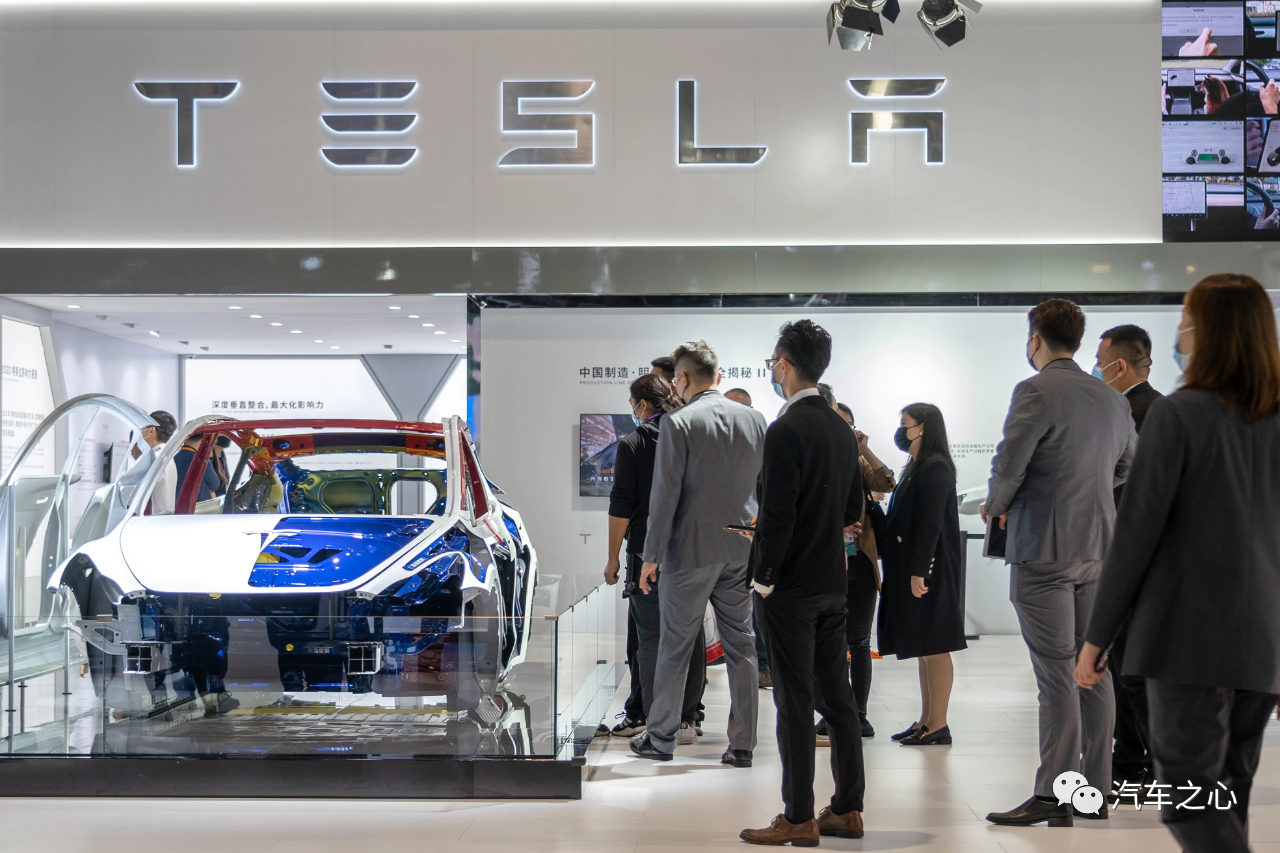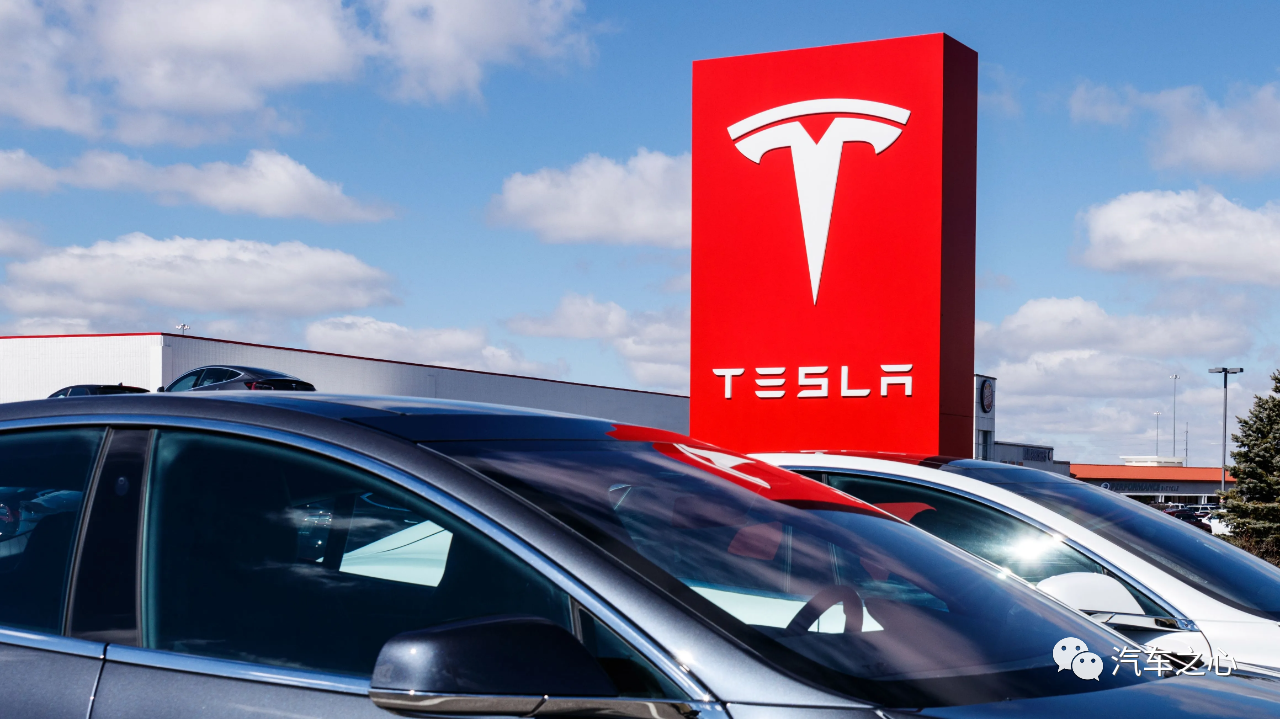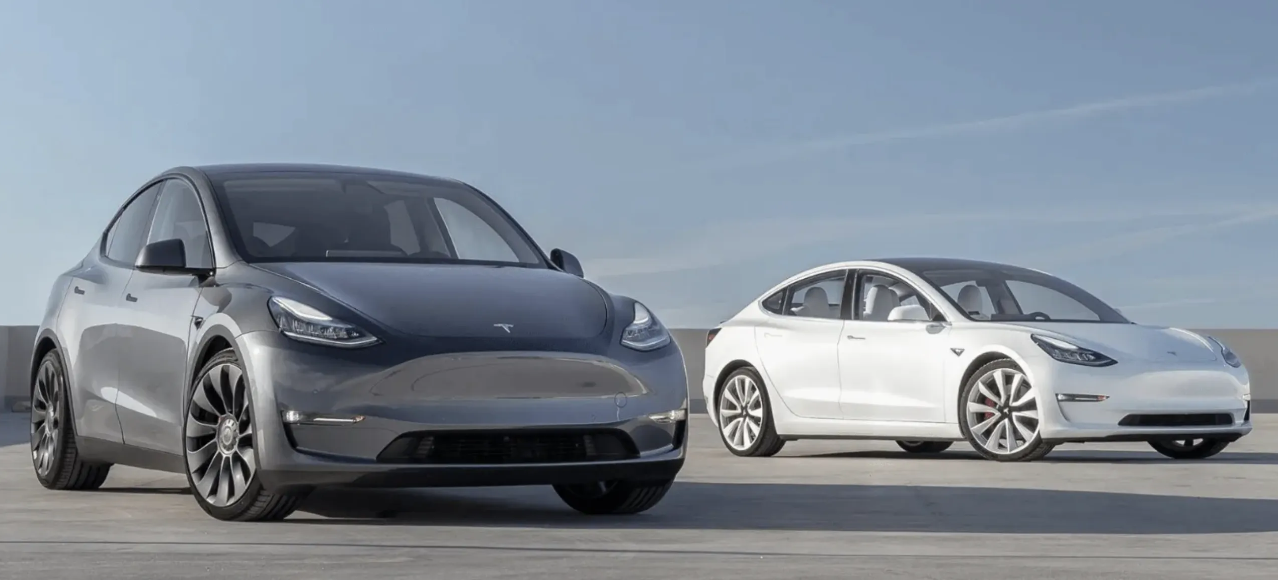“Price Butcher” Tesla Finally Arrived
Author: Zheng Senhong
After “disguised price reduction” under the name of insurance discount in September this year, Tesla has adjusted the prices of two main models, Model 3 and Model Y, on October 24, with a price reduction range of 14,000 to 37,000 yuan.
This is the first significant price cut by Tesla this year.
It should be noted that, in the context of high battery material costs and the continued loss of profits for electric vehicle companies, Tesla has chosen to go against the trend.
After Tesla announced the price adjustment, there were complaints from customers such as “eight thousand yuan reduction in one week, fourteen thousand yuan reduction in one month” and “currently losing thirty thousand yuan for receiving the car in one week.”
Perhaps under pressure from customers, Tesla changed its tune on the fourth day of the price cut: “Cold light silver paint is no longer standard for the rear-wheel-drive version of Model Y.”
This means that if consumers choose the cold light silver paint for the rear-wheel-drive version of Model Y, they need to pay an additional 8,000 yuan.
Despite the dissatisfaction caused by the significant price reduction, some old car owners protested in front of Tesla stores, even attacking salespeople, but these extreme methods of safeguarding their rights did not seem to affect Tesla’s sales.
According to Future Automotive Daily, just one morning after Tesla announced the price cut, the number of orders in Beijing had exceeded one thousand, and the trend of explosive orders continued to rise.
Obviously, the effect of “price reduction” is immediate, but Tesla’s actions also raise a few questions:
- Why did Tesla choose to “trade price for volume” at this time?
- Why does Tesla have a “quantity” shortage?
- How passive are domestic new energy vehicle companies?
Tesla’s Cold Winter Sales: The Inequality of “Increase” and “Decrease”
In fact, Tesla’s price reduction signal had already been rumored in September of this year.
At that time, many industry insiders believed that after the upgrade of the production line in the Shanghai Super Factory, Tesla might stimulate market demand by reducing prices.Meanwhile, Musk also revealed during the Q2 2022 earnings call: “I think inflation will come down by the end of the year, and hopefully we can slightly lower the price of the cars at that time.”
In mid-September, an email circulated online showed that customers who pick up their cars between September 16 and September 30 and choose to purchase insurance at a Tesla store can enjoy an 8000 yuan insurance subsidy, which can be directly used to reduce the car price.
Regarding this “indirect price reduction” move, sales staff responded that it is to meet the end-of-quarter delivery volume target.
In fact, chasing performance is just one of the reasons. Behind it all, Tesla actually wants to use the “limited-time offer” to know how many “real” orders it has.
According to analysis by Weibo account @电盒校长, after Tesla’s main product sales continued to rise in March this year, a large number of scalpers began hoarding orders, leading to serious delivery problems for Tesla. A limited-time offer is to squeeze the profit space of the scalpers and quickly transfer false orders on their hands.
“Essentially, these scalpers do not increase your sales. Instead, they are stealing your existing customers to fill in the previous false orders, which not only involves unknown false orders but also affects the manufacturer’s forecast of production progress and market policies in many dimensions.”
So, how many “real” orders does Tesla have on hand?
@Troy Teslike, a Twitter user who specializes in tracking Tesla delivery and other data analysis, found that after Tesla’s backlog of orders reached its peak in July 2022, it began to show a clear downward trend from the perspectives of Tesla’s production capacity and average order waiting time.


Survey data shows:
- Tesla’s orders in July 2022 reached nearly 500,000, the highest value.
- On October 21, the number of orders dropped below 300,000 for the first time, and only 293,000 orders can be completed with 70 days of production capacity.
It is worth mentioning that the rate of backlog orders for Tesla in China has decreased very rapidly. The number of orders exceeded 180,000 in July, and has now dropped to around 10,000 in October.
Official data shows that Tesla’s production in the first three quarters of this year was 930,000 vehicles, while sales were 912,500 vehicles, a difference of 17,500.
Among them, Tesla’s production in Q3 this year was 365,000 vehicles, and deliveries were 343,000 vehicles. Sales decreased by 6% compared to production, which is one of Tesla’s largest gaps in recent years.
Tesla, however, emphasized in a statement that all cars produced in Q3 this year have been ordered by customers.
The rapid digestion of Tesla’s orders also explains two reasons:
- One is continued expansion of production capacity;
- The other is a severe slowdown in demand.
Over the past year, Tesla’s four major factories around the world have been expanding production capacity.
- Tesla’s Shanghai factory has reached 750,000 vehicles, an increase of 50% compared to before (and will be expanded to 1,000,000 vehicles in the future);
- The California factory has reached 650,000 vehicles, an increase of 18%.- Two factories, located in Berlin and Texas respectively, officially started production in Q2 of this year with current capacity of 1,000 and 2,000 vehicles per week, equivalent to an annual production capacity of 50,000 to 100,000 vehicles (expected to eventually reach 250,000 vehicles per year).
- Overall, Tesla’s global annual production capacity has expanded from 720,000 vehicles in early 2021 to the current 1.5 million vehicles.
- In addition to quickly processing backlogged orders, the rapid increase in production capacity has also significantly shortened delivery times.
- According to Tesla China’s official website, delivery times for Model 3 have been shortened from 4-10 weeks to 1-4 weeks in the past two months, and delivery times for Model Y have been shortened from 10-14 weeks to 1-8 weeks, even with a recent surge in orders. This indicates that the gap between production and sales has already been significantly reduced, despite Tesla not yet running all of its factories at full capacity.
- If production capacity continues to expand, Tesla will undoubtedly face increasing sales pressure.
- According to industry insiders, due to two rounds of “unofficial incentives” from Tesla, as of mid-October, the situation for Tesla store visits in China is very poor, with order volume remaining basically flat or even slightly declining compared to before. If this situation continues, Tesla may face a “supply exceeds demand” scenario.
- In accordance with Musk’s goal of achieving 50% growth in 2022, Tesla must achieve a minimum of 1.5 million vehicle sales.Until the end of the third quarter, Tesla delivered a total of 908,600 vehicles globally, indicating a gap of 600,000 vehicles from its target for this year — which means at least 200,000 vehicles need to be produced and delivered every month.
For comparison, after a price war in the fourth quarter of 2021, the record-low-priced Model 3 and Model Y achieved record-high sales of only 308,000 orders.
Moreover, based on Tesla China’s market share of 51.7% last year, it means Tesla China must deliver at least 100,000 vehicles every month in the last three months of this year to ensure the completion of Musk’s goal.
In September of this year, Tesla China delivered 52,153 vehicles, an increase of nearly 40% year-on-year, and the highest single-month delivery volume in Tesla China’s history — which also means Tesla China needs to achieve a delivery KPI of 100,000 vehicles per month, but this is not an easy task.
“Price wars” are an inevitable trend for the surge in sales of electric vehicles and the display of scale bonuses, as well as a key strategy for car companies to cope with market competition.
Tesla’s decision to significantly reduce prices across its entire range at this point in time is undoubtedly a “stimulant” for sales.
“Price cuts” cured Musk’s anxiety
Tesla has always been the global leader in new energy vehicle sales, and its two main products, Model 3 and Model Y, have almost crushed same-class models in their respective sub-markets.
However, in the first half of 2022, BYD surpassed Tesla with sales of 640,000 vehicles, rewriting the industry pattern for the first time.
Based on the performance of domestic new energy vehicle sales this year, Tesla may have already felt the pressure from BYD.
As one of Tesla’s biggest current competitors, BYD’s cumulative sales in the third quarter of 2022 were approximately 537,000 vehicles, an increase of 187.01% year-on-year.
In September, the monthly sales exceeded 200,000 vehicles, an increase of 151.2% year-on-year.As of the first three quarters of 2022, BYD cumulative sales have exceeded 1.18 million units.
Meanwhile, Geely, GAC, and Changan, which ranked behind Tesla in sales, achieved year-over-year growth rates of 331%, 121%, and 187%, respectively.
Steve Westly, former board member of Tesla and founder of The Westly Group, once said, “I think Tesla has its first real competitor in China and its name is BYD.”
“Ford may sell 60,000 electric cars this year and GM is trying to get to 50,000, but neither’s sales are even 5% of Tesla’s, so now it’s Tesla and BYD in the race,” Westly added. “In the auto industry, outside of China, there are no other companies that have growth rates anywhere near Tesla’s.”
On the other hand, Tesla is facing increasing competition from rivals in the domestic market. In the price segment where the Model 3 and Model Y are located, domestic new energy vehicle companies have launched a variety of competitive products, including BYD, NIO, XPeng, Ideal, and Leapmotor. These companies, with their unique strengths in product offerings, have diverted Tesla’s target customer groups to varying degrees.
For example, the Model 3, which set sales records in the domestic market last year, has long been squeezed out of the top three sales rankings for new energy vehicles. Compared with the same period last year (January to September), the sales of Model 3 have decreased from over 110,000 units to less than 100,000 units, a year-on-year decrease of 11.4%.
The key reason behind this is that in the price range of RMB 200,000 to RMB 300,000, the Model 3 faces competition from other models such as the XPeng P7, BYD Han EV, Sea Lion, Changan Shenlan SL03, NETA S, and Leapmotor C01, all of which boast excellent product features and brand equity.
 For the 6-year-old Model 3, this undoubtedly amplifies its weaknesses time and time again.
For the 6-year-old Model 3, this undoubtedly amplifies its weaknesses time and time again.

In addition, although the less than 3-year-old Model Y still maintains a strong product force and has long been the top-selling high-end SUV in China, the competition in its subdivision field is also fierce.
Specifically, Model Y’s competing models include Avita 11, Wanjie M5 EV, FEIFAN R7, and XPeng G9, and the product force of each model cannot be underestimated.
For example, Avita 11 has Huawei’s advanced autonomous driving system, Wanjie M5 EV’s car machine is based on HarmonyOS, FEIFAN R7 supports vehicle-electricity separation, and XPeng G9 has 480kW ultra-fast charging and urban navigation assistance, which undoubtedly is the fiercest attack that Model Y has ever faced.
A report by Morgan Stanley analysts pointed out that Tesla is facing its biggest competition from local Chinese car companies.
As the current market competition becomes more and more fierce, every car company is trying to capture market share. For independent brands, cost-effectiveness has always been their usual strategy.
Therefore, before upgrading and enhancing product competitiveness, Tesla’s approach of narrowing the price difference with competitors through price reductions can be seen as the most direct counterattack.
Although this sudden price reduction by Tesla seems unexpected, it also seems to make sense upon closer examination: insufficient product competitiveness resulting in continued sluggish sales, and Tesla makes use of passive price reductions to rapidly increase sales volume.
Unable to keep up with the new players
At first glance, Tesla’s price-for-volume strategy seems to be an internal “independent decision.”
However, if we look at the entire new energy vehicle industry, Tesla’s price reduction is actually a blow to domestic automakers and may even ignite a new round of “price wars.”Affected by the continuous rise of upstream raw material prices, almost all car companies have alleviated cost pressures in the first half of this year by raising prices.
Taking lithium, a battery raw material, as an example, the price of lithium carbonate rose from about 290,000 yuan/ton in early this year to about 525,000 yuan/ton at the end of September, an increase of up to 81%. The price of battery-grade lithium hydroxide rose from about 230,000 yuan/ton in early this year to about 505,000 yuan/ton at the end of September, an increase of up to 120%.
In such a context, Tesla is able to launch a price war, backed by its sustained profitability.
For example, in the second quarter of 2022, the overall gross profit margins of the top new energy players, including NIO, were 16.7%, 9.7%, and 21.8%, respectively, while Tesla’s gross profit margin, although down to 27.9%, was still the highest among all car companies.
In terms of revenue, Tesla’s total revenue for the third quarter of 2022 was US $21.45 billion, and the adjusted net profit was US $3.65 billion, a year-on-year increase of 75%, with a single-car profit of about US $10,000.
For emerging carmakers, monthly sales exceeding 10,000 vehicles is an important threshold.
He XPeng once believed that it is only possible to achieve profitability when annual sales reach 100,000 vehicles. This also means that only when car companies reach a certain scale and already have a stable market position, and can reduce supply chain costs through economies of scale.
The problem now is that the trend of rising raw material prices has not improved, but has instead become more and more intense. New energy car companies are already selling cars at a loss, so how to deal with Tesla’s price war?
- Follow: It is even harder to control costs;
- Don’t follow: Market competitiveness will inevitably be affected.
 Price stability is an important way to maintain brand image. Both price reductions and increases of current models can have certain impacts on potential customers. Except for top-tier car companies, the position of many new energy brands is not stable, and multiple comprehensive factors need to be considered.
Price stability is an important way to maintain brand image. Both price reductions and increases of current models can have certain impacts on potential customers. Except for top-tier car companies, the position of many new energy brands is not stable, and multiple comprehensive factors need to be considered.
However, currently, many car companies are responding to Tesla’s price reduction through “hidden discounts”. For example, the AITO Wanjie M5 and M7 released insurance price discounts of CNY 8,000, along with free synchronously charging CNY 6,000 for vehicle exterior and interior upgrades, and free upgrades of second-row zero-gravity seats worth CNY 10,000 for the M7 model. The accumulated discount for these models reaches CNY 30,000.
In addition, except for its G9 model, Xpeng allows its other models to enjoy the last payment reduction of CNY 5,000-10,000 discounts. In addition, consumers could get an extra CNY 3,000 off during the “Double Eleven” period.
Apart from targeted subsidy discounts, BYD has chosen a long-term and active countermeasure. On October 27, the Ministry of Industry and Information Technology updated the declaration chart of BYD Han EV. The new model is equipped with a low-power motor, which indicates that the starting price of the new car is expected to be further reduced.
Overall, at this stage, car companies that can respond to Tesla basically rely on local policy subsidies and the gift of some vehicle options. After all, no car company on the market can adjust prices as flexibly as Tesla.
From this perspective, Tesla’s gross profit margin in Q2 was 11.9% higher than the average gross profit of NIO, XPeng, and Li Auto. If Tesla is willing to lower its gross margin to the same level as Li Auto, it means that Tesla still has 11.9% room for price cuts.
Take the Model Y Performance as an example. After this price reduction of CNY 20,000, there might be about CNY 30,000 room for price cuts.
 In terms of domestic new energy vehicle enterprises, there is always the possibility of a significant price cut from Tesla. How to cope with Tesla’s sudden price wars every time and how to turn passive into active in the future are both problems that must be faced. “It’s a bit cruel, but competition is fun,” said William Li, CEO of NIO, when Model 3 prices were cut last year.
In terms of domestic new energy vehicle enterprises, there is always the possibility of a significant price cut from Tesla. How to cope with Tesla’s sudden price wars every time and how to turn passive into active in the future are both problems that must be faced. “It’s a bit cruel, but competition is fun,” said William Li, CEO of NIO, when Model 3 prices were cut last year.
This article is a translation by ChatGPT of a Chinese report from 42HOW. If you have any questions about it, please email bd@42how.com.
